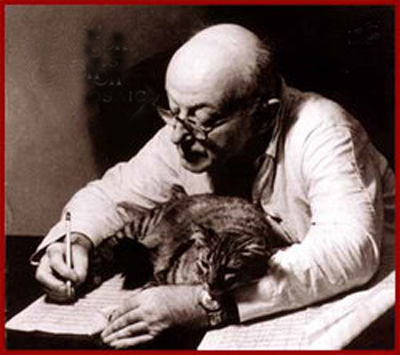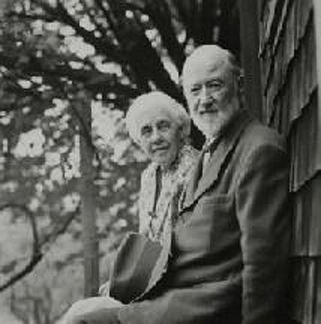Room 61--When a hand won't work use a fist!
If you’ve grown up in a household with a piano and you were a child, you know what you did when you thought no one was looking…pounded on the keys with the palms of your hands or your fists. And your parents no doubt reacted in some way, commenting that you shouldn’t do that to the piano.
Well, guess what? It’s OK, and as of about the time of the First World War, a number of composers were experimenting with those types of sounds. For example, Henry Cowell.
 He was born March 11, 1897 in Menlo Park, California, where he grew up surrounded by a wide variety of Oriental musical traditions, his father's Irish folk heritage, and his mother's Midwestern folktunes. Already composing in his early teens, Cowell began formal training at age 16 with Charles Seeger at the University of California. He was an experimenter at heart.
He was born March 11, 1897 in Menlo Park, California, where he grew up surrounded by a wide variety of Oriental musical traditions, his father's Irish folk heritage, and his mother's Midwestern folktunes. Already composing in his early teens, Cowell began formal training at age 16 with Charles Seeger at the University of California. He was an experimenter at heart.
Soon he was experimenting with the piano and in this 1917 composition, The Tides of Manaunaun, you used your palms and forearms on the keyboard.
Listen!
However, even before this, was Charles Ives, pictured here with his wife, Harmony Twitchell.

You probably heard his piece for two pianos tuned a quarter-tone apart on an earlier page. This amazing passage is from the Concord Sonata for piano, and it was completed around 1915. The passage you will hear is from the second movement, meant to evoke the spirit of author Nathaniel Hawthorne. What is truly unbelievable is the jazz-like quality to the piano writing and the concluding part where one is directed to play with one fists. This breathtaking performance has been out of print for more 40 years. Aloys Kontarsky is the artist and it remains the definitive rendition.
Listen!
Return to classroom second floor..
Return to classroom first floor..
If you need to leave, Go to initial page of site.
If you are interested in advertising a music-related business in the pages of the classroom, please send us an e-mail regarding rates by clicking here.
 He was born March 11, 1897 in Menlo Park, California, where he grew up surrounded by a wide variety of Oriental musical traditions, his father's Irish folk heritage, and his mother's Midwestern folktunes. Already composing in his early teens, Cowell began formal training at age 16 with Charles Seeger at the University of California. He was an experimenter at heart.
He was born March 11, 1897 in Menlo Park, California, where he grew up surrounded by a wide variety of Oriental musical traditions, his father's Irish folk heritage, and his mother's Midwestern folktunes. Already composing in his early teens, Cowell began formal training at age 16 with Charles Seeger at the University of California. He was an experimenter at heart.